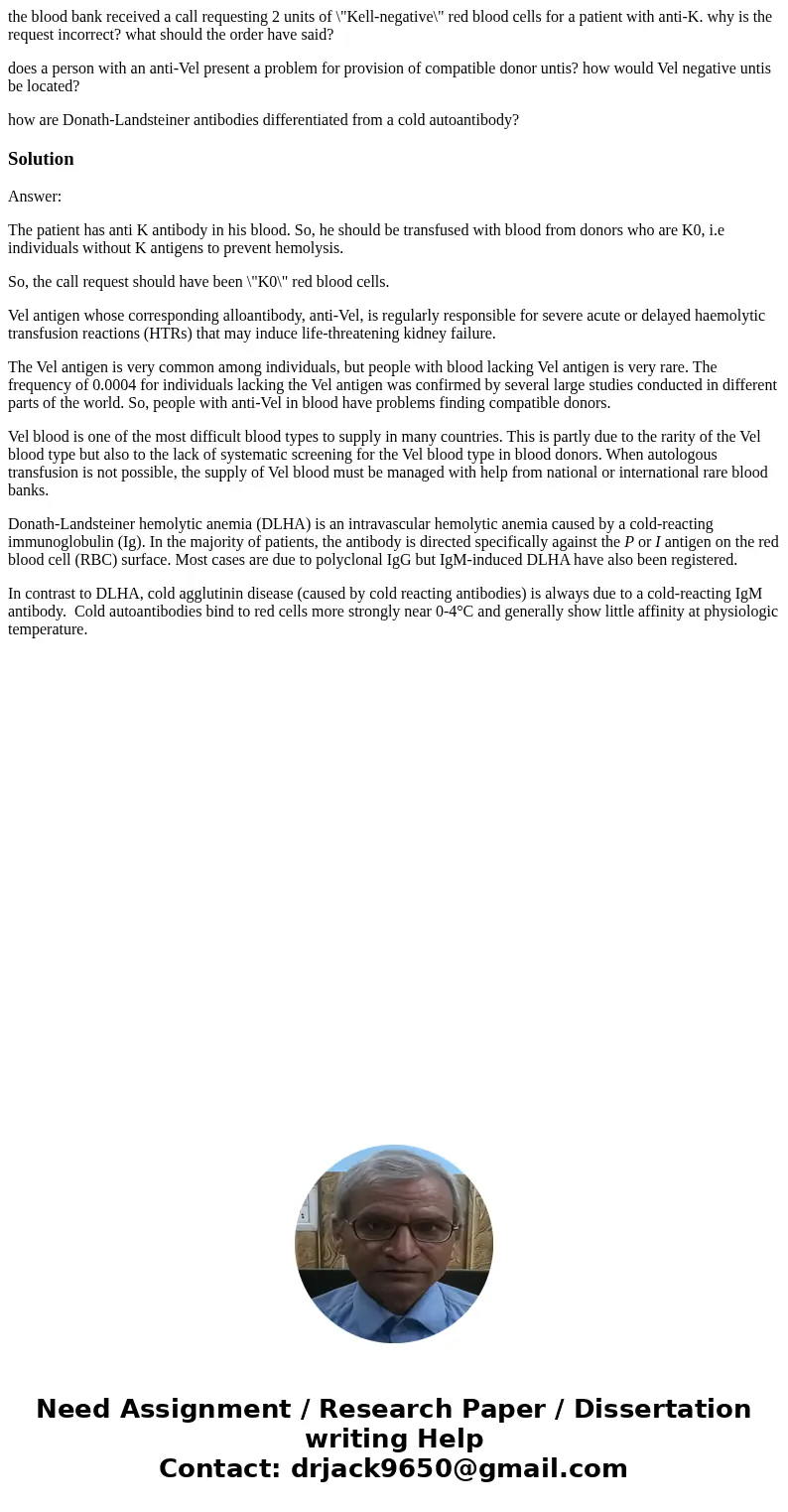the blood bank received a call requesting 2 units of Kellneg
the blood bank received a call requesting 2 units of \"Kell-negative\" red blood cells for a patient with anti-K. why is the request incorrect? what should the order have said?
does a person with an anti-Vel present a problem for provision of compatible donor untis? how would Vel negative untis be located?
how are Donath-Landsteiner antibodies differentiated from a cold autoantibody?
Solution
Answer:
The patient has anti K antibody in his blood. So, he should be transfused with blood from donors who are K0, i.e individuals without K antigens to prevent hemolysis.
So, the call request should have been \"K0\" red blood cells.
Vel antigen whose corresponding alloantibody, anti-Vel, is regularly responsible for severe acute or delayed haemolytic transfusion reactions (HTRs) that may induce life-threatening kidney failure.
The Vel antigen is very common among individuals, but people with blood lacking Vel antigen is very rare. The frequency of 0.0004 for individuals lacking the Vel antigen was confirmed by several large studies conducted in different parts of the world. So, people with anti-Vel in blood have problems finding compatible donors.
Vel blood is one of the most difficult blood types to supply in many countries. This is partly due to the rarity of the Vel blood type but also to the lack of systematic screening for the Vel blood type in blood donors. When autologous transfusion is not possible, the supply of Vel blood must be managed with help from national or international rare blood banks.
Donath-Landsteiner hemolytic anemia (DLHA) is an intravascular hemolytic anemia caused by a cold-reacting immunoglobulin (Ig). In the majority of patients, the antibody is directed specifically against the P or I antigen on the red blood cell (RBC) surface. Most cases are due to polyclonal IgG but IgM-induced DLHA have also been registered.
In contrast to DLHA, cold agglutinin disease (caused by cold reacting antibodies) is always due to a cold-reacting IgM antibody. Cold autoantibodies bind to red cells more strongly near 0-4°C and generally show little affinity at physiologic temperature.

 Homework Sourse
Homework Sourse